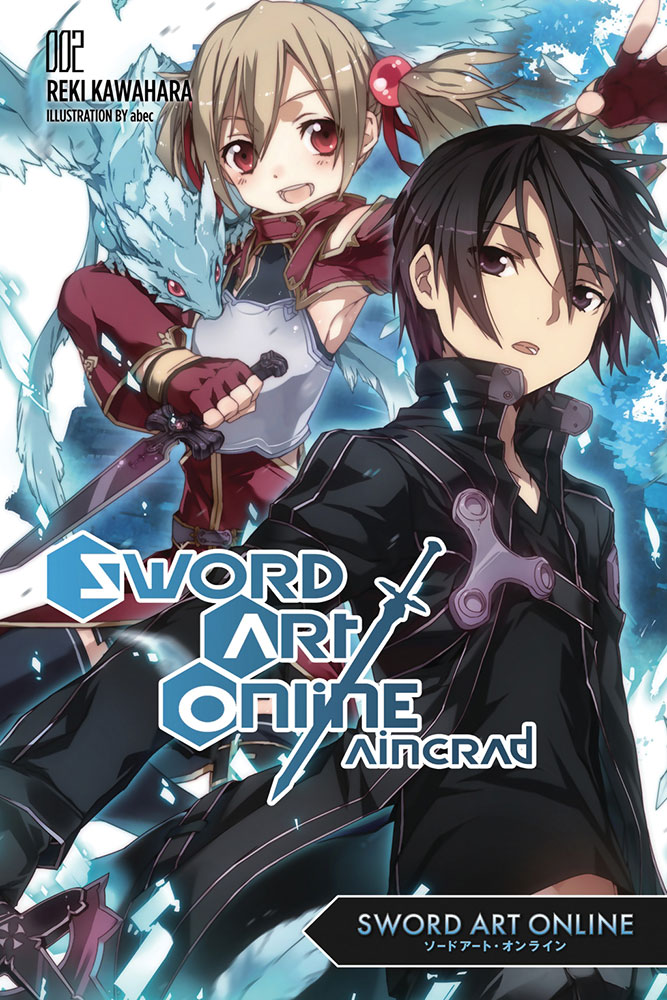By Reki Kawahara and abec. Released in Japan by ASCII Mediaworks. Released in North America by Yen Press.
The author of this novel admits in his afterword that the first book was an excellent stand alone, but did not really make for much of an ongoing series. So, in order to fix that, he’s going back and adding a few elements that might a) expand the cast and draw in a few more fans of those ‘types’, b) expand the world of Aincrad a bit more before everyone is free of it, and c) give a bit more depth to Kirito’s mental and emotional issues while continuing to show off how amazing he is (really, if Kirito bothers you as a super awesome guy, you should probably find some other series to read. I’ve no real issues with it.)
This novel consists of four short stories, and while they all achieve something, I’d have to see it’s the last two that hold more emotional weight and are better written. In the first story we meet Silica, a young girl who has a rare beast and has let it go to her head, with potentially tragic circumstances. Kirito straight up admits (though later he reveals that part of this was a ploy) that he’s helping her as she reminds him of his younger sister. Having read Fairy Dance’s manga, I don’t really see it, but again, ploy. We see a bit of how criminal activity works in the world of SAO, and also how a young girl on her own would have to deal with creepers – Silica is well-known, popular, and underage, a dangerous combination even in a MMORPG.
Next we meet Lisbeth, a blacksmith who is friends with Asuna and indeed shares many of her qualities. Kirito comes to her looking for a second sword, and so they have to go on a quest for the mystery metal that can make it. I found this the weakest story in a few ways, but it does manage to highlight what it must be like for an outsider on coming across the relationship between Kirito and Asuna. The author may be adding more cute girls to fall for Kirito (we get three in this book alone), but never lets us forget that Kirito and Asuna are THE couple, and Lisbeth, much as it hurts, can’t bring herself to try to come between them. (She also gets first person narration, the first we’ve seen that isn’t Kirito’s.)
The third story was my favorite, and not coincidentally focused on Kirito and Asuna right after they get married, when they come across a young girl in the forest. The manga adapted this, but I hadn’t realized how much it was compressed – here we meet several more cast, and it’s revealed that most of the young kids in the game are not leveling up like Silica, but just wanting to survive. Sasha corralling them is a definite good thing. It’s also nice seeing a romantic couple that isn’t the main one – Yuriel attempts to frame Thinker as her commanding officer, but it becomes clear early on she’s deeply in love with him. Mostly, though, this is the heartbreaking story of an AI who overcomes mental blocks to help her parents, and a coulpe that experience the exquisite pain of losing their child.
The last short story is the shortest, and is the only story in first-person Kirito narration. It expands on the story he’d told us in the first book about the guild he joined that was wiped out – in particular Sachi, the young woman he reassures but can’t quite save. This is Kirito at his darkest and most driven, and it’s stated several times that he’s in a suicidal state. It’s stark and emotional, though the actual guild and their fate is more of a catalyst than anything else – this is not about them, it’s about how Kirito can get over his grief and start to recover.
As you’d expect, this was a lot more uneven than the first book, but I enjoy its leads, and I like the expanded worldbuilding. Now that we’ve done that, hopefully Book 3 will show us Kirito and Asuna happily reuniting in the real world. Well, unless something goes horribly wrong…

